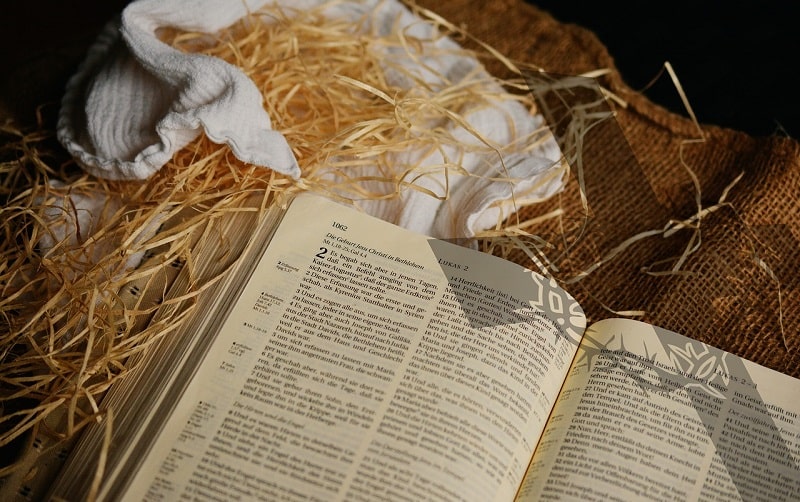Cruz na Bíblia. Significado e Versículos sobre Cruz
A cruz tem como sua principal representação a dor, sofrimento e morte. Muito utilizada antigamente como método de castigo e condenação de assassinos, ladrões e pessoas que cometiam algum crime.
Mas, para nós, além disso, ela representa amor, entrega e sacrifício. Através da cruz, Jesus morreu e ressuscitou em nosso favor, nos reconectando a Deus.
Podemos ver em diversos versículos sobre a cruz o quanto Deus nos amou, entregando seu próprio filho para morrer em nosso lugar.
Significado de Cruz
A crucificação era um método romano de execução, primeiramente reservado a escravos. Neste ato se combinavam os elementos de vergonha e tortura, e por isso este processo de justiçar os réus era olhado com o mais profundo horror.
O castigo da crucificação começava com a flagelação, depois de o criminoso ter sido despojado dos seus vestidos. No azorrague muitas vezes os soldados fixavam pregos, pedaços de osso, e coisas semelhantes, podendo a tortura do açoitamento ser tão forte que às vezes o flagelado morria em conseqüência dos açoites.
Geralmente a flagelação era efetuada estando o réu preso a uma coluna. No caso de Jesus, parece ter sido esse castigo infligido de modo brando, antes da sentença, com o fim de provocar a compaixão e conseguir isenção do novo atormentamento (Lucas 23.22 – e João 19.1).
Colocava-se, em geral, uma inscrição por cima da cabeça da pessoa (Mateus 27.37 – Marcos 15.26 – Lucas 23.38 – João 19.19), em poucas palavras, exprimindo o seu crime. O criminoso levava a sua cruz ao lugar da execução.
Jesus Cristo foi pregado na cruz, mas algumas vezes o paciente era apenas atado a esse instrumento de suplício, sendo certo que este último processo era considerado o mais penoso, visto como a agonia do criminoso era extraordinariamente prolongada.
Entre os judeus, algumas vezes o corpo de um criminoso era dependurado numa árvore – mas não podia ficar ali durante a noite, porque era ‘maldito de Deus’, e contaminaria a terra (Deuteronômio 21.2 – Deuteronômio 23). Paulo aplica esta passagem a Jesus na sua epístola aos Gálatas 3.13, e dela podem achar-se ecos em At. 5.30 – Gálatas 10.39 etc.
Cruz – Dicionário Bíblico de Easton
Apoie Nosso Trabalho
Faça agora uma contribuição para que possamos continuar espalhando a palavra de Deus. Clique no botão abaixo:
Cruz
No Novo Testamento, o instrumento de crucificação, e portanto usado para a própria crucificação de Cristo (Efésios 2.16 ; Hebreus 12.2 ; 1 Coríntios 1.17 1 Coríntios 1.18 ; Gálatas 5.11 ; Gálatas 6.12 Gálatas 6.14 ; Filipenses 3.18).
A palavra também é usada para denotar qualquer aflição ou provação severa (Mateus 10.38 ; Mateus 16.24 ; Marcos 8.34 ; Marcos 10.21).
As formas em que a cruz é representada são estas:
1. A crux simplex (I), uma “peça única sem travessão”.
2. A crux decussata (X), ou cruz de Santo André.
3. A crux commissa (T), ou cruz de Santo Antônio.
4. A crux immissa (t), ou cruz latina, que foi o tipo de cruz na qual nosso Salvador morreu. Acima da cabeça de nosso Senhor, na viga projetada, foi colocada o “título”.
Após a conversão, assim chamada, de Constantino, o Grande (313 a.C.), a cruz começou a ser usada como um emblema do Cristianismo. Ele fingiu, em um momento crítico, que viu uma cruz flamejante nos céus com a inscrição, “In hoc signo vinces”, ou seja, Por este sinal conquistarás, e que na noite seguinte o próprio Cristo apareceu e ordenou-lhe que tomasse como seu estandarte o sinal desta cruz.
Nesta forma, um novo estandarte, chamado Labarum, foi então feito e carregado pelos exércitos romanos. Ele permaneceu o estandarte do exército romano até a queda do império ocidental. Ele ostentava o monograma bordado de Cristo, ou seja, as duas primeiras letras gregas de seu nome, X e P (chi e rho), com o Alfa e o Ômega.
Easton, Matthew George. “Entrada para Cruz”. “Dicionário Bíblico de Easton”.
Cruz – Dicionário Bíblico de Smith
Cross.
As the emblem of a slaves death and a murderers punishment, the cross was naturally looked upon with the profoundest horror. But after the celebrated vision of Constantine, he ordered his friends to make a cross of gold and gems, such as he had seen, and “the towering eagles resigned the flags unto the cross,” and “the tree of cursing and shame” “sat upon the sceptres and was engraved and signed on the foreheads of kings.” (Jeremias Taylor, “Life of Christ,” iii., xv. 1.) The new standards were called by the name Labarum, and may be seen on the coins of Constantine the Great and his nearer successors.
The Latin cross on which our Lord suffered, was int he form of the letter T, and had an upright above the cross-bar, on which the “title” was placed. There was a projection from the central stem, on which the body of the sufferer rested.
This was to prevent the weight of the body from tearing away the hands. Whether there was also a support to the feet (as we see in pictures) is doubtful. An inscription was generally placed above the criminals head, briefly expressing his guilt, and generally was carried before him.
It was covered with white gypsum, and the letter were black.
Smith, William, Dr. “Entry for ‘Cross’”. “Smith’s Bible Dictionary”. 1901.
Cruz – Enciclopédia Internacional da Bíblia Padrão
Cross
(stauros, “a cross,” “the crucifixion”; skolops, “a stake,” “a pole”):
The name is not found in the Old Testament. It is derived from the Latin word crux. In the Greek language it is stauros, but sometimes we find the word skolops used as its Greek equivalent. The historical writers, who transferred the events of Roman history into the Greek language, make use of these two words.
No word in human language has become more universally known than this word, and that because all of the history of the world since the death of Christ has been measured by the distance which separates events from it.
The symbol and principal content of the Christian religion and of Christian civilization is found in this one word.
1. Forms of the Cross:
The cross occurs in at least four different forms:
(1) the form usually seen in pictures, the crux immissa, in which the upright beam projected above the shorter crosspiece; this is most likely the type of cross on which the Saviour died, as may be inferred from the inscription which was nailed above His head;
(2) the crux commissa, or Anthony’s cross, which has the shape of the letter T;
(3) the Greek cross of later date, in which the pieces are equally long;
(4) the crux decussata, or Andrew’s cross, which has the shape of the letter X.
2. Discovery of the True Cross:
The early church historians Socrates ( – Marcos 17), Sozomen ( – Marcos 1), Rufinus ( – Marcos 7) and Theodoret ( – Marcos 18) all make mention of this tradition. The most significant thing is that Eusebius (Vit. Const., iii.26-28), who carries more weight than they all together, wholly omits it.
According to it, Helena, the mother of Constantine the Great, in 325 AD, when she was 79 years old, discovered the true cross of Jesus by an excavation she caused to be made on the traditional spot of His grave.
With the cross of the Saviour were found the two crosses of the malefactors who were crucified with Him. A miracle of healing, wrought by touching the true cross, revealed its identity. Whenfound it was intact, even the holy nails of the crucifixion being discovered.
The main part of the cross was deposited by Helena in a church erected over the spot. Of the remainder, a portion was inserted into the head of the statue of Constantine, and the balance was placed in a new church, specially erected for it at Rome and named after it Santa Croce.
Small fragments of the wood of the true cross were sold, encrusted with gold and jewels, and since many among the wealthy believers were desirous of possessing such priceless relics, the miracle of the “multiplication of the cross” was devised, so that the relic suffered no diminution “et quasi intacta maneret” (Paulinus epistle 11 ad Sev).
Fragments of the true cross are thus to be found in many Roman Catholic churches of many countries, all over Christendom. It is said that the East celebrated the staurosimos hemera (Crucifixion Day) on September 14, since the 4th century.
The evidence for this fact is late and untrustworthy. It is certain that the West celebrated the Invention of the Cross, on May 3, since the time of Gregory the Great in the 6th century. The finding and publication of the apocryphal “Doctrina Addaei” has made it evident that the entire legend of the discovery of the cross by Helena is but a version of the old Edessa legend, which tells of an identical discovery of the cross, under the very same circumstances, by the wife of the emperor Claudius, who had been converted to Christianity by the preaching of Peter.
3. Symbolical Uses of the Cross:
(1) Extra-Scriptural.
The sign of the cross was well known in the symbolics of various ancient nations. Among the Egyptians it is said to have been the symbol of divinity and eternal life, and to have been found in the temple of Serapis.
It is known either in the form of the Greek cross or in the form of the letter “T”. The Spaniards found it to be well known, as a symbol, by the Mexicans and Peruvians, perhaps signifying the four elements, or the four seasons, or the four points of the compass.
(2) Scriptural.
The suffering implied in crucifixion naturally made the cross a symbol of pain, distress and burden-bearing. Thus Jesus used it Himself
;16:24
. In Paulinic literature the cross stands for the preaching of the doctrine of the Atonement ; ; ; . It expresses the bond of unity between the Jew and the Gentile , and between the believer and Christ, and also symbolizes sanctificação . The cross is the center and circumference of the preaching of the apostles and of the life of the New Testament church.4. Crucifixion:
As an instrument of death the cross was detested by the Jews. “Cursed is everyone that hangeth on a tree”
; compare , hence, it became a stumbling-block to them, for how could one accursed of God be their Messiah? Nor was the cross differently considered by the Romans. “Let the very name of the cross be far away not only from the body of a Roman citizen, but even from his thoughts, his eyes, his ears” (Cicero Pro Rabirio 5). The earliest mode of crucifixion seems to have been by impalation, the transfixion of the body lengthwise and crosswise by sharpened stakes, a mode of death-punishment still well known among the Mongol race. The usual mode of crucifixion was familiar to the Greeks, the Romans, the Egyptians, Persians and Babylonians (Thuc. – Deuteronômio 110 Herod. iii.12 – Deuteronômio 159). Alexander the Great executed two thousand Tyrian captives in this way, after the fall of the city. The Jews received this form of punishment from the Syrians and Romans (Ant., XII, v – Deuteronômio 4 XX, vi – Deuteronômio 2 BJ, I, iv – Deuteronômio 6). The Roman citizen was exempt from this form of death, it being considered the death of a slave (Cicero In Verrem i. – Deuteronômio 66 Quint. viii.4). The punishment was meted out for such crimes as treason, desertion in the face of the enemy, robbery, piracy, assassination, sedition, etc. It continued in vogue in the Roman empire till the day of Constantine, when it was abolished as an insult to Christianity. Among the Romans crucifixion was preceded by scourging, undoubtedly to hasten impending death. The victim then bore his own cross, or at least the upright beam, to the place of execution. This in itself proves that the structure was less ponderous than is commonly supposed. When he was tied to the cross nothing further was done and he was left to die from starvation. If he was nailed to the cross, at least in Judea, a stupefying drink was given him to deaden the agony. The number of nails used seems to have been indeterminate. A tablet, on which the feet rested or on which the body was partly supported, seems to have been a part of the cross to keep the wounds from tearing through the transfixed members (Iren., Adv. haer., ii.42). The suffering of death by crucifixion was intense, especially in hot climates. Severe local inflammation, coupled with an insignificant bleeding of the jagged wounds, produced traumatic fever, which was aggravated the exposure to the heat of the sun, the strained of the body and insufferable thirst. The swelled about the rough nails and the torn lacerated tendons and nerves caused excruciating agony. The arteries of the head and stomach were surcharged with blood and a terrific throbbing headache ensued. The mind was confused and filled with anxiety and dread foreboding. The victim of crucifixion literally died a thousand deaths. Tetanus not rarely supervened and the rigors of the attending convulsions would tear at the wounds and add to the burden of pain, till at last the bodily forces were exhausted and the victim sank to unconsciousness and death. The sufferings were so frightful that “even among the raging passions of war pity was sometimes excited” (BJ, V, xi – Marcos 1). The length of this agony was wholly determined by the constitution of the victim, but death rarely ensued before thirty-six hours had elapsed. Instances are on record of victims of the cross who survived their terrible injuries when taken down from the cross after many hours of suspension (Josephus, Vita – Deuteronômio 75). Death was sometimes hastened by breaking the legs of the victims and by a hard blow delivered under the armpit before crucifixion. Crura fracta was a well-known Roman term (Cicero Phil. xiii.12). The sudden death of Christ evidently was a matter of astonishment . The peculiar symptoms mentioned by John (19:34) would seem to point to a rupture of the heart, of which the Saviour died, independent of the cross itself, or perhaps hastened by its agony.Henry E. Dosker
Orr, James, M.A., D.D. General Editor. “Entry for ‘CROSS’”. “International Standard Bible Encyclopedia”. 1915.
11 Principais Versículos sobre Cruz
Apoie Nosso Trabalho
Faça agora uma contribuição para que possamos continuar espalhando a palavra de Deus. Clique no botão abaixo:
17 Versículos sobre Cruz no Novo Testamento
Apoie Nosso Trabalho
Faça agora uma contribuição para que possamos continuar espalhando a palavra de Deus. Clique no botão abaixo:
Apoie Nosso Trabalho
Faça agora uma contribuição para que possamos continuar espalhando a palavra de Deus. Clique no botão abaixo:
Leia também:
- Versículos sobre aborto
- Versículos sobre família
- Conheça tudo sobre a corça e veja os versículos sobre corça na Bíblia!
- Versículos sobre gula
25 Músicas sobre Cruz
Aos Pés Da Cruz – Ao Vivo – Eli Soares
https://open.spotify.com/track/6eGiN7AOFxQXhWkORV0E9f
Eu Vou Passar pela Cruz – PG
https://open.spotify.com/track/49cP1TSysfYkF5UOKF6evN
A Mensagem da Cruz – Gabriel Brito
https://open.spotify.com/track/5DHtNgpx0PD6jYZEzZFTKs
Diante da Cruz (At the Cross) – Aline Barros
https://open.spotify.com/track/6Eys2kpYf4z9PlRJ48Ql8C
A Cruz Era pra Mim – Pedro Henrique
https://open.spotify.com/track/48UpUPpwIbSHvOONi7GUv6
O Ladrão da Cruz – Marcos e Matteus
https://open.spotify.com/track/2pnSxnMW6PB8gE15YKyiUy
A Mensagem da Cruz – Ao Vivo – Nani Azevedo
https://open.spotify.com/track/2Pg77E8hQZK1rKURiBuAIG
Rude Cruz – Ellas
https://open.spotify.com/track/5eI5PzwfQwr5QcYsMxYCVN
Aos Pés da Cruz – Ao Vivo – LUDI
https://open.spotify.com/track/4fVOleOiFwM2INJXDJyR3Y
A Vitória da Cruz – Ao Vivo – Diante do Trono
https://open.spotify.com/track/0WDePvj0BFUgH6VMrhUgWJ
Foi Na Cruz – Luiz De Carvalho
https://open.spotify.com/track/1dMXNHeSIKL435Jifc6IrB
A Cruz e o Paraíso – Fernandinho
https://open.spotify.com/track/78qSS4POhRF5YTY96Rpk7V
Depois da Cruz – Aline Barros
https://open.spotify.com/track/6u1MLNfLVVkURj37c10gGj
Rude Cruz – Ao Vivo – Fernandinho
https://open.spotify.com/track/44u9J1QLjd8tvI6a3QEvqy
Ainda existe uma cruz – Ao Vivo – Diante do Trono
https://open.spotify.com/track/1ncD47SqZZFRxnUfpy7E1F
Mensagem da Cruz – Aline Barros
https://open.spotify.com/track/6RR2o4RCopQEAKtxkPIvkc
A Mensagem da Cruz, 291 – Shirley Carvalhaes
https://open.spotify.com/track/38jnyJUs2QDzpTNd3JRVFJ
Diante da Cruz (At The Cross) – Aline Barros
https://open.spotify.com/track/3zYzK96o4EtKv1QSsScWj1
Minha Cruz – Deise do Vale
https://open.spotify.com/track/1AaOf6A4GSDGJaylYz421M
Morreu Na Cruz – Gabriela Rocha
https://open.spotify.com/track/7p9E2BijsJ3Cl6uJrryFvQ
Cruz – Heloisa Rosa
https://open.spotify.com/track/0KaplRwIOETZnBxQmp87pF
Nem Cravos Nem Cruz – Leonor
https://open.spotify.com/track/5Jb3gIsDDe51zZj2AEvVGb
Já Estou Crucificado, Rude Cruz, Ao Pé da Cruz – Acústica – Fernandinho
https://open.spotify.com/track/4j6DJmB8Mm6T1FMj0E0rn0
Tua Cruz – Central 3
https://open.spotify.com/track/4BsClXJqfSRfVMQc9iN5UI
Cruz – Ao Vivo – Trazendo a Arca
https://open.spotify.com/track/1eGWXj1Ov41e3dlVmLjvRK
Apoie Nosso Trabalho
Faça agora uma contribuição para que possamos continuar espalhando a palavra de Deus. Clique no botão abaixo:


